The Rock Hill Herald reported on July 22, 1886 – “Mr. L.C. Thompson of Liberty Hill in Fairfield County was plowing his garden when he unearthed a small box. He opened it and found two watches. The gentleman’s watch was a fine gold watch of English make bearing the initials J.W.H. The other was a small lady’s watch with the initials S.C.J. These watches were buried in 1865 when Sherman’s army was approaching the area and then after the war the box couldn’t be located. Mr. Thompson was aware of this and located the owners who were; J.W. Hudson of Winnsboro for many years the Pres. of Mt. Zion College and Mrs. S.C. Jones. The watches are now at a jewelers for repair. The only damage being some corroded steel springs.”
City Directories and History: This monument stands over the grave of Jacob W. Hudson, principal of Mount Zion Institute from 1832 – 1858. Under his administration, the school became famous for quality education, preparing young men for higher institutions of learning, especially for the South Carolina College. The marker was erected by the Mt. Zion Society: DeKalb Lodge, I.O. of O.F. Winnsboro Lodge AFM and his pupils and friends. [Courtesy of the Chamber of Commerce]
————-
“Mount Zion Collegiate Institute and Graded School is the pride of Winnsboro and possesses a more than merely local reputation, for it is known to every student of South Carolina history as one of the oldest institutions of learning in the State. It has had continuous existence in some shape or other, saving for the time that Winnsboro was occupied by Cornwallis, ever since it was first established by the Mount Zion Society in 1777. That society was

Postcard images of the old and new Mount Zion schools. Courtesy of the AFLLC Collection – 2017
 incorporated “for the purpose of founding, endowing, and supporting a public school in the district of Camden” and authority was granted to the corporation “to take and hold any charitable devotion or devises of land or personal estate and to appropriate the same to the endowing and supporting of the said school and to the maintenance and education of such poor and helpless children as they shall judge proper objects of the charity hereby intended.”
incorporated “for the purpose of founding, endowing, and supporting a public school in the district of Camden” and authority was granted to the corporation “to take and hold any charitable devotion or devises of land or personal estate and to appropriate the same to the endowing and supporting of the said school and to the maintenance and education of such poor and helpless children as they shall judge proper objects of the charity hereby intended.”
It would be interesting, if the limits of this sketch permitted, to trace the history of this noble society. Throughout all of the long years of its existence it has steadily maintained the objects of its original organization and has embraced within its membership citizens from various sections of the State, many of them from Charleston, in fact so many that for quite a long period the meetings of the Society were held in that city. Since 1825, however, they have always been held in Winnsboro. The Institute was changed to a college in 1785, and at that time the buildings were of logs; later on, in 1787, a two-story brick building was erected, and rows of chairs constructed for the accommodation of the student boarders. From 1834 to 1858 the institution was under the management of that famous instructor of youth, J.W. Hudson, and such was the high reputation it acquired that it is said that no other institution of learning in the Southern States stood as high in the estimation of the people, and its graduates held the highest rank in the community.

Van Center image showing the relationship of the Old Mt. Zion Academy to the Teacherage.
Under the Hudson administration the building was greatly enlarged; a three- story building was added to the rear, and similar additions made to the north and south. All of these, however, were accidentally destroyed by fire in 1867. Soon afterwards a two-story brick building was erected on the original foundation, and in 1878 a public graded school was established under the management of Prof. R. Means Davis (the gentleman who now so ably fills the chair of history in the South Carolina University) and was continued under his successors to the present time.
The collegiate feature was again revived in 1885, just one hundred years from the granting of the original charter. Bonds were issued by the town to the amount of $7,500, and the additional buildings that were needed were at once erected. The entire structure, as it now stands, whilst not imposing in height, presents a pleasing appearance and is admirably arranged with an eye to the comfort and convenience of the students. The rooms are eight in number, large, well lighted, and well ventilated, and furnished with improved seats, desks, maps, and all necessary apparatus.
The Institute is the happy possessor of one of the most valuable mineral collections in the State. This collection was presented to it by Mrs. Rion, the widow of the lamented Col. James H. Rion, and is of great service to the student of geology and mineralogy. There is also connected with the Institute an excellent laboratory, which contains all the necessary apparatus for conducting the student through the elementary course in chemistry and in which complete instruction in physics can be given. Among the other scientific instruments in the laboratory I was shown by Prof. Witherow, the courteous and efficient president, a radio-meter, which is said to be the first one ever brought into the State. It would be impossible to enumerate all the features of this portion of the Institution, but it is certainly one of the most complete in point of modem equipment outside of the State University, and as a consequence the students of Mount Zion, when they pass from here to the University, always stand especially high in all scientific branches.”
Reprinted from South Carolina in the 1880s: A Gazetteer by J.H. Moore, Sandlapper Publishing Company – 1989
Click on the More Information > link found below the picture column for additional data or pictures, including an aerial of downtown Winnsboro. Several individuals in Winnsboro refer to this structure as the teacherage but not proof has been offered to R&R to support this claim.
Stay Connected
Explore history, houses, and stories across S.C. Your membership provides you with updates on regional topics, information on historic research, preservation, and monthly feature articles. But remember R&R wants to hear from you and assist in preserving your own family genealogy and memorabilia.
Visit the Southern Queries – Forum to receive assistance in answering questions, discuss genealogy, and enjoy exploring preservation topics with other members. Also listed are several history and genealogical researchers for hire.
User comments welcome — post at the bottom of this page.
Also see information on supporting the restoration of the school itself at: www.mtzioninstitute.com
Do you have information to share and preserve? Family, school, church, or other older photos and stories are welcome. Send them digitally through the comments link, so they too might be posted on Roots and Recall. Help preserve Fairfield County’s important heritage by telling your family’s stories and posting their images.
Thanks!
- Architectural elements of the teacherage – 2013.
User comments always welcome - please post at the bottom of this page.
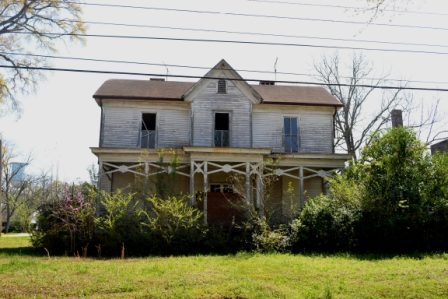





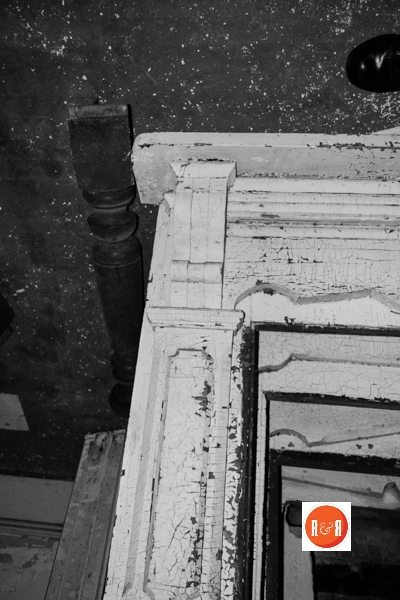
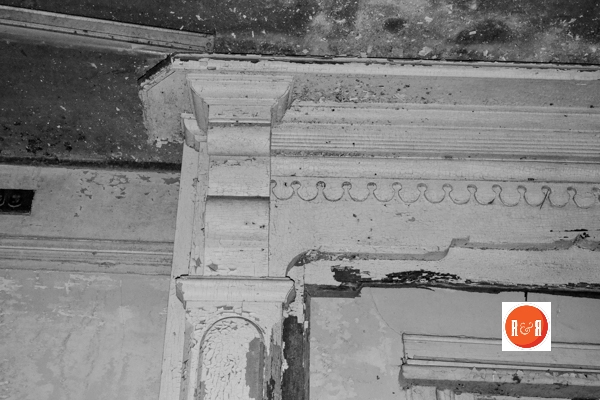
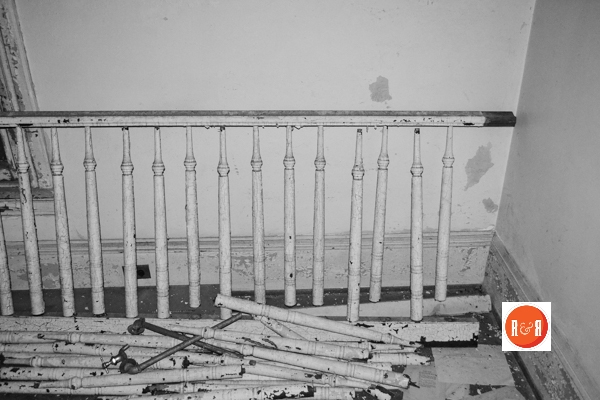
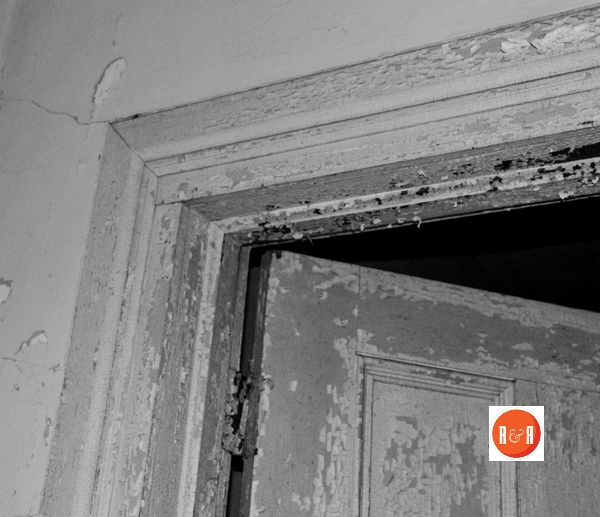
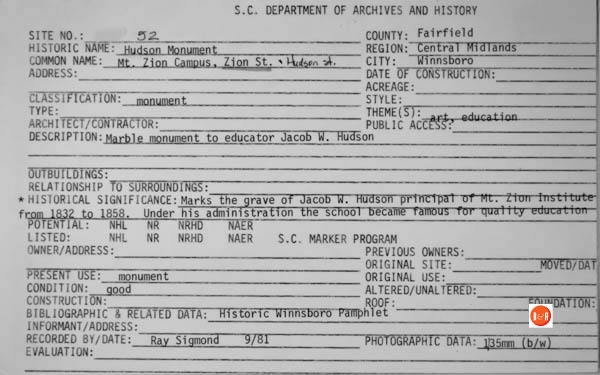

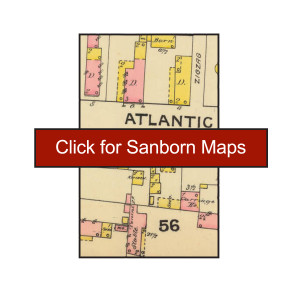
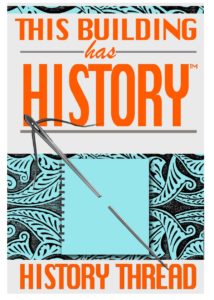

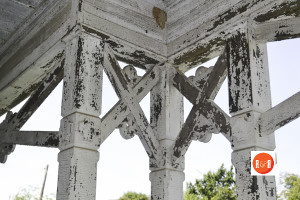

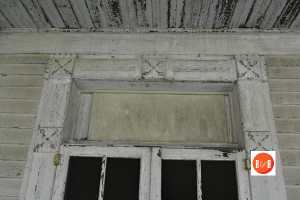





Share Your Comments & Feedback: